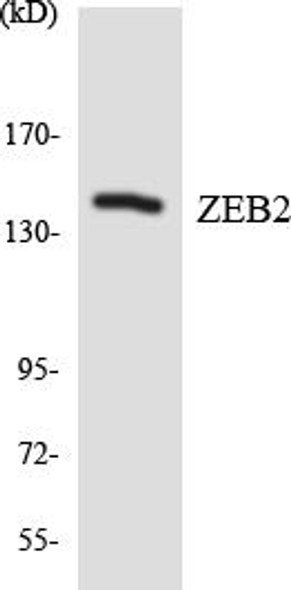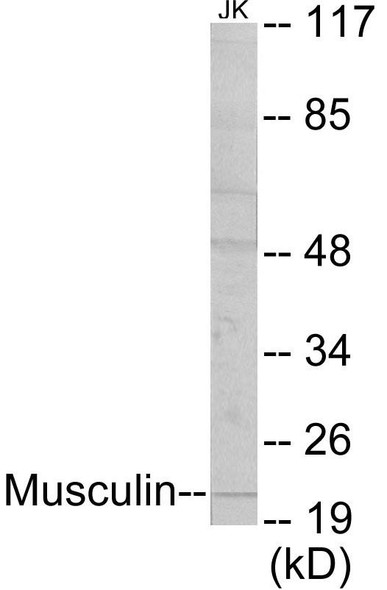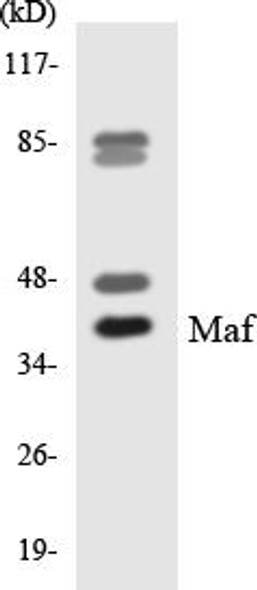Description
COPS5 Colorimetric Cell-Based ELISA
The COPS5 Colorimetric Cell-Based ELISA Kit is specifically designed for the quantitative measurement of COPS5 (COP9 signalosome subunit 5) levels in cell lysates. This kit offers high sensitivity and efficiency in detecting COPS5 levels, providing accurate and reliable results for research purposes.COPS5 is a key protein involved in regulating various cellular processes, including cell cycle progression, DNA damage response, and protein degradation. Dysregulation of COPS5 has been linked to cancer, neurodegenerative disorders, and other diseases, making it a valuable biomarker for understanding disease mechanisms and potential therapeutic targets.
With easy-to-follow protocols and optimized reagents, the COPS5 Colorimetric Cell-Based ELISA Kit is an essential tool for researchers studying the role of COPS5 in cellular pathways and disease progression. Get reliable and reproducible results with this advanced ELISA kit from AssayGenie.
| Product Name: | COPS5 Colorimetric Cell-Based ELISA |
| Product Code: | CBCAB01171 |
| ELISA Type: | Cell-Based |
| Target: | COPS5 |
| Reactivity: | Human, Mouse |
| Dynamic Range: | > 5000 Cells |
| Detection Method: | Colorimetric 450 nmStorage/Stability:4°C/6 Months |
| Format: | 96-Well Microplate |
The COPS5 Colorimetric Cell-Based ELISA Kit is a convenient, lysate-free, high throughput and sensitive assay kit that can detect COPS5 protein expression profile in cells. The kit can be used for measuring the relative amounts of COPS5 in cultured cells as well as screening for the effects that various treatments, inhibitors (ie siRNA or chemicals), or activators have on COPS5.
Qualitative determination of COPS5 concentration is achieved by an indirect ELISA format. In essence, COPS5 is captured by COPS5-specific primary antibodies while the HRP-conjugated secondary antibodies bind the Fc region of the primary antibody. Through this binding, the HRP enzyme conjugated to the secondary antibody can catalyze a colorimetric reaction upon substrate addition. Due to the qualitative nature of the Cell-Based ELISA, multiple normalization methods are needed:
| 1. | A monoclonal antibody specific for human GAPDH is included to serve as an internal positive control in normalizing the target absorbance values. |
| 2. | Following the colorimetric measurement of HRP activity via substrate addition, the Crystal Violet whole-cell staining method may be used to determine cell density. After staining, the results can be analysed by normalizing the absorbance values to cell amounts, by which the plating difference can be adjusted. |
| Database Information: | Gene ID: 10987, UniProt ID: Q92905, OMIM: 604850, Unigene: Hs.491912 |
| Gene Symbol: | COPS5 |
| Sub Type: | None |
| UniProt Protein Function: | COPS5: Probable protease subunit of the COP9 signalosome complex (CSN), a complex involved in various cellular and developmental processes. The CSN complex is an essential regulator of the ubiquitin (Ubl) conjugation pathway by mediating the deneddylation of the cullin subunits of the SCF-type E3 ligase complexes, leading to decrease the Ubl ligase activity of SCF-type complexes such as SCF, CSA or DDB2. The complex is also involved in phosphorylation of p53/TP53, c-jun/JUN, IkappaBalpha/NFKBIA, ITPK1 and IRF8, possibly via its association with CK2 and PKD kinases. CSN-dependent phosphorylation of TP53 and JUN promotes and protects degradation by the Ubl system, respectively. In the complex, it probably acts as the catalytic center that mediates the cleavage of Nedd8 from cullins. It however has no metalloprotease activity by itself and requires the other subunits of the CSN complex. Interacts directly with a large number of proteins that are regulated by the CSN complex, confirming a key role in the complex. Component of the CSN complex, composed of COPS1/GPS1, COPS2, COPS3, COPS4, COPS5, COP6, COPS7 (COPS7A or COPS7B) and COPS8. In the complex, it probably interacts directly with COPS1, COPS2, COPS4, COPS6 and COPS7 (COPS7A or COPS7B). The CSN complex interacts with the BRISC complex. Also exists as monomeric form. Interacts with TP53, MIF, JUN, UCHL1, NCOA1, HIF1A, p27Kip1, BCL3, GFER, PGR, LHCGR, SMAD4, SMAD7, ID1, ID3, ITGB2 and TOP2A. Part of a complex consisting of RANBP9, Ran, DYRK1B and COPS5. Belongs to the peptidase M67A family. CSN5 subfamily. |
| UniProt Protein Details: | Protein type:Adaptor/scaffold; Translation; Protease; Transcription, coactivator/corepressor; Nuclear receptor co-regulator; EC 3.4.-.- Chromosomal Location of Human Ortholog: 8q13.1 Cellular Component: cytoplasm; eukaryotic translation initiation factor 3 complex; nucleoplasm; nucleus; signalosome; synaptic vesicle Molecular Function:metallopeptidase activity; protein binding; transcription coactivator activity; translation initiation factor activity; ubiquitin-specific protease activity Biological Process: cullin deneddylation; nucleotide-excision repair, DNA damage recognition; positive regulation of transcription from RNA polymerase II promoter; protein deneddylation; protein deubiquitination; regulation of JNK cascade; transcription from RNA polymerase II promoter; transcription-coupled nucleotide-excision repair; translation |
| NCBI Summary: | The protein encoded by this gene is one of the eight subunits of COP9 signalosome, a highly conserved protein complex that functions as an important regulator in multiple signaling pathways. The structure and function of COP9 signalosome is similar to that of the 19S regulatory particle of 26S proteasome. COP9 signalosome has been shown to interact with SCF-type E3 ubiquitin ligases and act as a positive regulator of E3 ubiquitin ligases. This protein is reported to be involved in the degradation of cyclin-dependent kinase inhibitor CDKN1B/p27Kip1. It is also known to be an coactivator that increases the specificity of JUN/AP1 transcription factors. [provided by RefSeq, Jul 2008] |
| UniProt Code: | Q92905 |
| NCBI GenInfo Identifier: | 55976562 |
| NCBI Gene ID: | 10987 |
| NCBI Accession: | Q92905.4 |
| UniProt Secondary Accession: | Q92905,O15386, Q6AW95, Q86WQ4, Q9BQ17, |
| UniProt Related Accession: | Q92905 |
| Molecular Weight: | 37,579 Da |
| NCBI Full Name: | COP9 signalosome complex subunit 5 |
| NCBI Synonym Full Names: | COP9 signalosome subunit 5 |
| NCBI Official Symbol: | COPS5 |
| NCBI Official Synonym Symbols: | CSN5; JAB1; SGN5; MOV-34 |
| NCBI Protein Information: | COP9 signalosome complex subunit 5 |
| UniProt Protein Name: | COP9 signalosome complex subunit 5 |
| UniProt Synonym Protein Names: | Jun activation domain-binding protein 1 |
| UniProt Gene Name: | COPS5 |
| UniProt Entry Name: | CSN5_HUMAN |
| Component | Quantity |
| 96-Well Cell Culture Clear-Bottom Microplate | 2 plates |
| 10X TBS | 24 mL |
| Quenching Buffer | 24 mL |
| Blocking Buffer | 50 mL |
| 15X Wash Buffer | 50 mL |
| Primary Antibody Diluent | 12 mL |
| 100x Anti-Phospho Target Antibody | 60 µL |
| 100x Anti-Target Antibody | 60 µL |
| Anti-GAPDH Antibody | 60 µL |
| HRP-Conjugated Anti-Rabbit IgG Antibody | 12 mL |
| HRP-Conjugated Anti-Mouse IgG Antibody | 12 mL |
| SDS Solution | 12 mL |
| Stop Solution | 24 mL |
| Ready-to-Use Substrate | 12 mL |
| Crystal Violet Solution | 12 mL |
| Adhesive Plate Seals | 2 seals |
The following materials and/or equipment are NOT provided in this kit but are necessary to successfully conduct the experiment:
- Microplate reader able to measure absorbance at 450 nm and/or 595 nm for Crystal Violet Cell Staining (Optional)
- Micropipettes with capability of measuring volumes ranging from 1 µL to 1 ml
- 37% formaldehyde (Sigma Cat# F-8775) or formaldehyde from other sources
- Squirt bottle, manifold dispenser, multichannel pipette reservoir or automated microplate washer
- Graph paper or computer software capable of generating or displaying logarithmic functions
- Absorbent papers or vacuum aspirator
- Test tubes or microfuge tubes capable of storing ≥1 ml
- Poly-L-Lysine (Sigma Cat# P4832 for suspension cells)
- Orbital shaker (optional)
- Deionized or sterile water
*Note: Protocols are specific to each batch/lot. For the correct instructions please follow the protocol included in your kit.
| Step | Procedure |
| 1. | Seed 200 µL of 20,000 adherent cells in culture medium in each well of a 96-well plate. The plates included in the kit are sterile and treated for cell culture. For suspension cells and loosely attached cells, coat the plates with 100 µL of 10 µg/ml Poly-L-Lysine (not included) to each well of a 96-well plate for 30 minutes at 37°C prior to adding cells. |
| 2. | Incubate the cells for overnight at 37°C, 5% CO2. |
| 3. | Treat the cells as desired. |
| 4. | Remove the cell culture medium and rinse with 200 µL of 1x TBS, twice. |
| 5. | Fix the cells by incubating with 100 µL of Fixing Solution for 20 minutes at room temperature. The 4% formaldehyde is used for adherent cells and 8% formaldehyde is used for suspension cells and loosely attached cells. |
| 6. | Remove the Fixing Solution and wash the plate 3 times with 200 µL 1x Wash Buffer for five minutes each time with gentle shaking on the orbital shaker. The plate can be stored at 4°C for a week. |
| 7. | Add 100 µL of Quenching Buffer and incubate for 20 minutes at room temperature. |
| 8. | Wash the plate 3 times with 1x Wash Buffer for 5 minutes each time. |
| 9. | Add 200 µL of Blocking Buffer and incubate for 1 hour at room temperature. |
| 10. | Wash 3 times with 200 µL of 1x Wash Buffer for 5 minutes each time. |
| 11. | Add 50 µL of 1x primary antibodies (Anti-COPS5 Antibody and/or Anti-GAPDH Antibody) to the corresponding wells, cover with Parafilm and incubate for 16 hours (overnight) at 4°C. If the target expression is known to be high, incubate for 2 hours at room temperature. |
| 12. | Wash 3 times with 200 µL of 1x Wash Buffer for 5 minutes each time. |
| 13. | Add 50 µL of 1x secondary antibodies (HRP-Conjugated AntiRabbit IgG Antibody or HRP-Conjugated Anti-Mouse IgG Antibody) to corresponding wells and incubate for 1.5 hours at room temperature. |
| 14. | Wash 3 times with 200 µL of 1x Wash Buffer for 5 minutes each time. |
| 15. | Add 50 µL of Ready-to-Use Substrate to each well and incubate for 30 minutes at room temperature in the dark. |
| 16. | Add 50 µL of Stop Solution to each well and read OD at 450 nm immediately using the microplate reader. |
(Additional Crystal Violet staining may be performed if desired – details of this may be found in the kit technical manual.)






